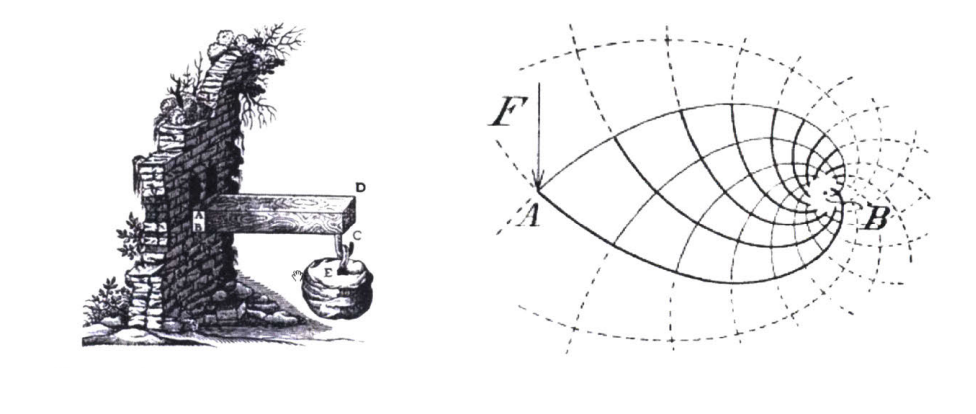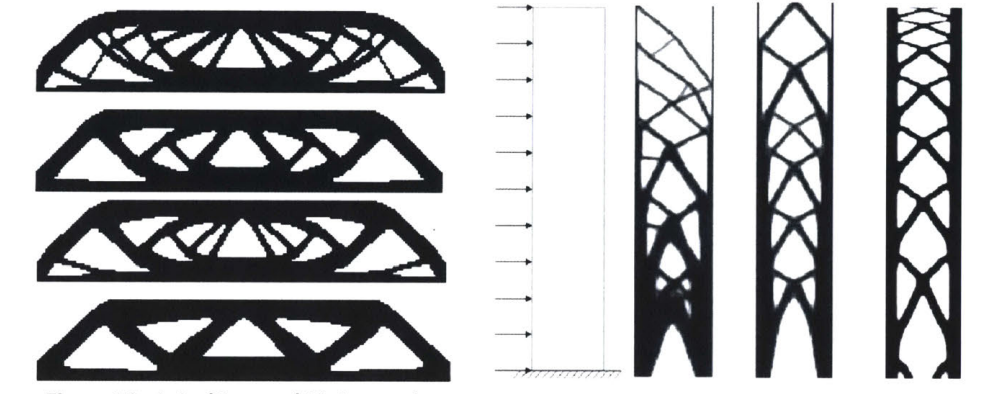Andrew Novillo, in writing his thesis for the Department of Civil and Mechanical Engineering at MIT, explores topology optimized metal in the recently published ‘Experimentation of a topology-optimized metal structural connection under casting constraints’. While topology optimization is still new in construction and civil engineering, the aim of the study is to ‘bridge the gap across disciplines’ with a building design, efficient technique for fabrication, and comprehensive load testing.
Emerging and evolving from theories created by Galileo, beam design and optimization are certainly not novel concepts or exercises; however, today optimization is generally managed by high-tech software tools that allow engineers to design substantial, sophisticated structures.
Topology optimization is also used in applications for the automotive industry and other types of engineering, to include aerospace.
For this study, Novillo used a gradient-based algorithm to create a complex roof truss connection (from the Scottish Parliament in Edinburgh). This sample serves as a unique and ‘unordinary’ example, with a connection that may be simple regarding symmetry, but complex in angularity for both planes.
For optimization, load, design space, and boundaries must be considered—with the use of an algorithm that works toward a list of specific objectives to include typical examples like:
- Stiffness
- Minimum mass
- Maximum displacement
Constraints may involve:
- Percentage of mass removed
- Maximum deflection
- Minimum thickness
While so far there are only a few examples of topology optimization in civil engineering, other researchers have pointed out previously that it should be present ‘early on in the design process’ while so much flexibility is still possible; others have pointed out that such optimization offers promise from the conceptual level for designing geometries of structures. Further studies have focused on ‘component scale applications’ like optimizing strut-and-tie models and cantilevers for high-rises.
Internal, external, and splices make up the several types of structural connections used in designing and construction buildings:
“Internal connections are the individual parts of an assembly which help to construct a whole external connection. External connections are the pieces that link all the other elements such as beams, cables, and columns together in a building. For larger projects, a member may sometimes be too large for transportation and may require being split up into smaller pieces. This instance would call for a splice connection, which links two or more parts of a continuous element,” explains Novillo.
For this study, the author focused on creating an external connection with four linked beams and four cables in one node, stating that there are no built structures using 3D printed connections—although 3D printing technology may be used for casting, in the fabrication of molds.
“Topology optimization has only begun to make its way into the building industry because of the lack of testing being conducted to evaluate its performance,” states Novillo.
The researchers used Abaqus for this study, the commercial software of choice due to its built-in finite element analysis (FEA) and Tosca with topology optimization—used in a ‘density-based approach.’ Ultimately, Novillo noted that optimization and analysis showed not only significant savings in material but also offered improvements in performance.
“The results of the experiment saw the original connection as the strongest specimen for the ultimate loads, stiffness, and compliance. The optimized connections performed only around 12.5% of what was expected for the ultimate load, while the original connection performed about 50% of what was expected. However, there may be a proportional stiffness between the optimized specimens, as the ultimate load was directly proportional to the amount of volume removed,” concluded Novillo. “The compliance of the optimized connections was multiple orders of magnitude greater for the experimentation than in the Abaqus model, while the original connection was only four times greater. Overall, the original connection more closely aligned to the Abaqus analysis than the optimized connections.
“This study shows how sensitive the optimization is when establishing the correct material properties, boundary conditions, casting process, and volume constraints. This study also provides the first iteration of the design process for creating a topology-optimized connection that performs the same in physical experimentation as it does computationally. Lessons can be taken from this and applied to the next iteration of this design.”
The topic of topology optimization and ways to refine it as well as apply it to 3D printing and additive manufacturing processes continues to expand, from use in automotive components to fabrication of lattice structures, workflow for creating medical devices like orthotics, and more.
What do you think of this news? Let us know your thoughts! Join the discussion of this and other 3D printing topics at 3DPrintBoard.com.

Relationship between design freedom and design knowledge in building design projects (Mueller and Ochsendorf 2013)
Subscribe to Our Email Newsletter
Stay up-to-date on all the latest news from the 3D printing industry and receive information and offers from third party vendors.
You May Also Like
Gorilla Sports GE’s First 3D Printed Titanium Cast
How do you help a gorilla with a broken arm? Sounds like the start of a bad joke a zookeeper might tell, but it’s an actual dilemma recently faced by...
Nylon 3D Printed Parts Made More Functional with Coatings & Colors
Parts 3D printed from polyamide (PA, Nylon) 12 using powder bed fusion (PBF) are a mainstay in the additive manufacturing (AM) industry. While post-finishing processes have improved the porosity of...
$25M to Back Sintavia’s Largest Expansion of Metal 3D Printing Capacity Since 2019
Sintavia, the digital manufacturing company specializing in mission-critical parts for strategic sectors, announced a $25 million investment to increase its production capacity, the largest expansion to its operations since 2019....
Velo3D Initiates Public Offering in a Bid to Strengthen Financial Foundations and Drive Future Growth
Velo3D (NYSE: VLD) has been among a number of publicly traded 3D printing firms that have attempted to weather the current macroeconomic climate. After posting a challenging financial report for 2023,...



































